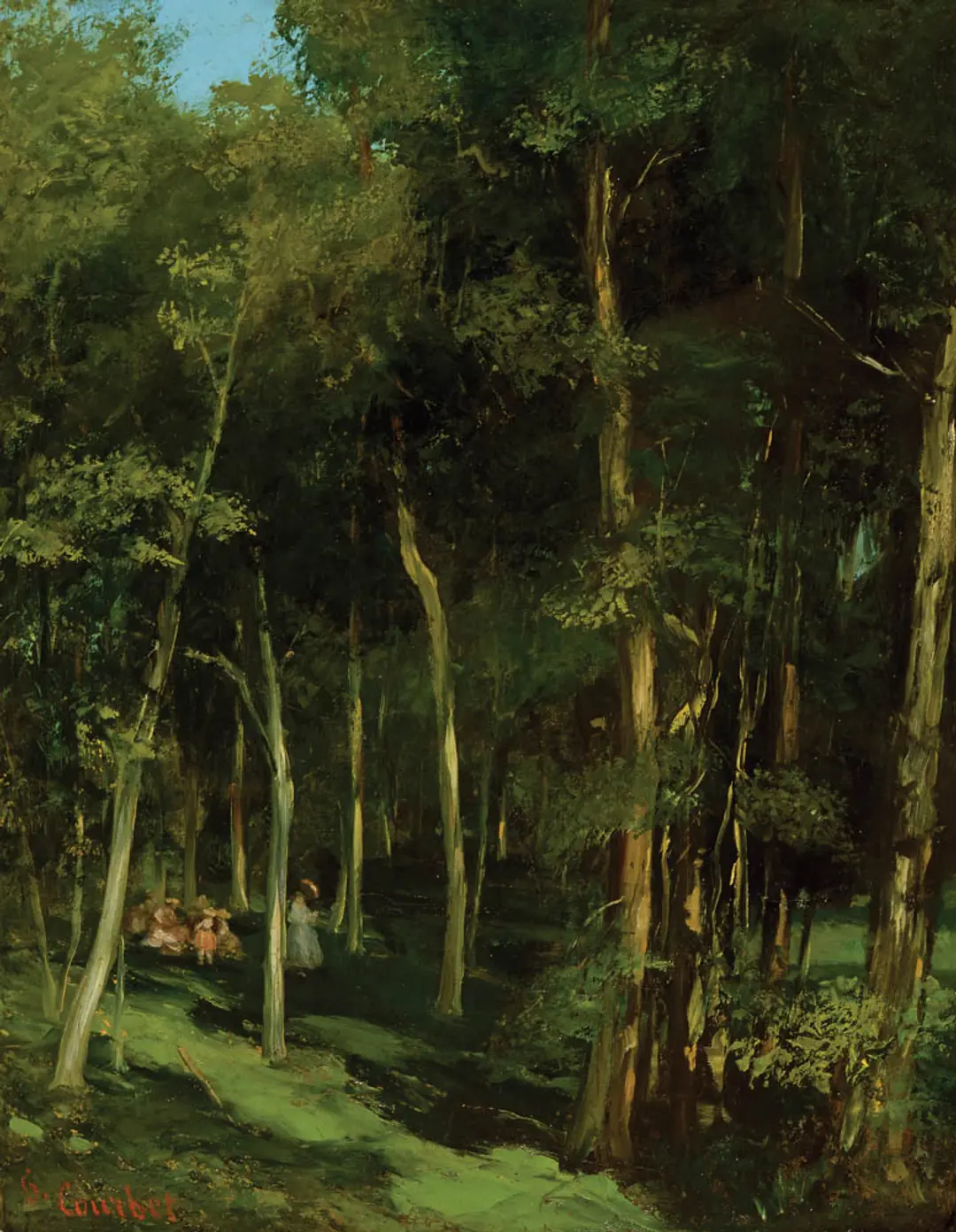News:
Was UK museum's Courbet landscape stolen in Nazi-occupied France for Hitler’s deputy?
By Martin Bailey
Now in Cambridge’s Fitzwilliam Museum, a restitution claim for the work has been submitted to the Spoliation Advisory Panel
The sylvan La Ronde Enfantine, painted around 1863, may well have been known as Forest Scene
An atmospheric Gustave Courbet landscape painting in Cambridge’s Fitzwilliam Museum is likely to have been looted by the Nazis in occupied France. The Art Newspaper can report that a restitution claim has just been submitted to the UK’s Spoliation Advisory Panel.
La Ronde Enfantine (Children Dancing: Beneath the Trees at Port-Berteau) was donated to the museum in 1951. Our inquiries suggest that it may well have been acquired as looted art by Hitler’s deputy Hermann Göring, following a picture swap with foreign minister Joachim von Ribbentrop.
The scene was painted in around 1863, when Courbet was staying at Saintes, in western France. It depicts a group of dancing children, spotlit by the sun in a largely darkened forest.
The painting’s first owner was Courbet’s local patron in Saintes, Etienne Baudry. But after that the provenance trail goes cold for many decades.
The Fitzwilliam was until recently unaware of what had happened to the painting during the 1933-45 Nazi period, but our research suggests that it may well be a work, then entitled Forest Scene, which is listed in a US Army report of 15 August 1945 on art spoliated by the German occupiers in France. Forest Scene has virtually the same dimensions as the Fitzwilliam picture (67cm × 53 cm).
This report records that Forest Scene was seized in 1941 by the Nazi looting taskforce, known as the Einsatzstab Reichsleiter Rosenberg, and was then selected by Göring for his personal collection. It had almost certainly been confiscated from a Jewish owner in France. The report then states that in 1942 the Courbet formed part of an exchange of several works between Göring and Ribbentrop (who had been the pre-war ambassador in London). Ribbentrop was one of the major Nazi collectors of looted art. He had a penchant for French 19th-century paintings, owning a number of Courbets.
The report also names the earlier owner of Forest Scene as the Bing collection. It is unclear what happened to Forest Scene after it was acquired by Ribbentrop, who was the first Nazi to be hanged in 1946 following the Nuremberg Trials.
According to new research by the Fitzwilliam, its painting La Ronde Enfantine was held by the Zurich dealer Kurt Meissner after the war, who sold it to the London dealer Arthur Tooth in 1951. It was then bought by Eric Milner-White, the Dean of York. White donated the painting to the Fitzwilliam later in 1951.
The Nazi-era claim will now be considered by the government’s Spoliation Advisory Panel, which is expected to produce a detailed report and recommendations for the UK culture secretary. The panel will need to consider two key questions: Are Forest Scene and La Ronde Enfantine the same work? And if so, who was the pre-war owner who lost the painting to the Nazis?
The Fitzwilliam, part of the University of Cambridge, would then follow the government’s advice on whether the painting should be restituted to the claimant, who has not yet been named. Meanwhile, their curators believe that it “may have been seized in Paris by Nazi agents during the Second World War”—so they are appealing for information about its provenance.


